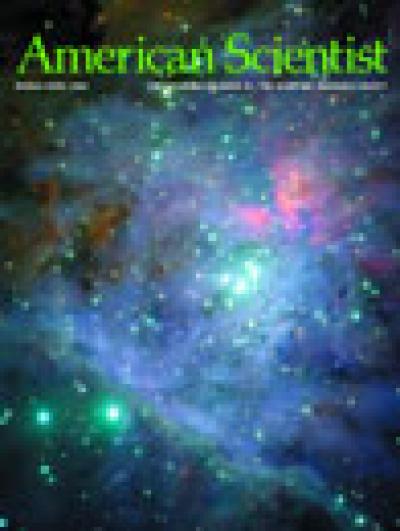Magazine
March-April 2002

March-April 2002
Volume: 90 Number: 2
Hiding among the thousands of newborn stars in the heart of the Orion Nebula (M42) are untold numbers of "free-floating planets"—planet-sized bodies unattached to a parent star. The recent discovery of about 15 free-floating planets within the Trapezium region (the four bright stars near the center of the image) and at least two dozen more in other dense stellar clusters has unsettled the astronomical community and raised questions about the nature of planets and how they might form. In "Free-Floating Planets and Stellar Clusters," Jarrod R. Hurley and Michael M. Shara consider how the dynamic interactions between the stars in a dense stellar cluster may free planets in a "solar system" from the gravitational bondage of their parent stars. This infrared image of the Orion Nebula reveals perhaps only a thousand young stars (most of the others are obscured by dust) and none of the known free-floating planets (which are too dim). (Image courtesy of Mark McCaughrean of the Astrophysikalisches Institut in Potsdam, Germany, and the European Southern Observatory.)
In This Issue
- Agriculture
- Astronomy
- Biology
- Chemistry
- Communications
- Computer
- Engineering
- Environment
- Evolution
- Mathematics
- Physics
- Policy
- Psychology
- Sociology
- Technology
Free-Floating Planets and Stellar Clusters
Jarrod Hurley, Michael Shara
Astronomy
Scientists have been looking for planets in strange places, far from their parent stars, within some of the densest star clusters in the Galaxy
Adaptive Radiation of Darwin's Finches
Peter Grant
Evolution
Recent data help explain how this famous group of Galapagos birds evolved, although gaps in our understanding remain
Computers, Paradoxes and the Foundations of Mathematics
Gregory Chaitin
Computer Mathematics
Some great thinkers of the 20th century have shown that even in the austere world of mathematics, incompleteness and randomness are rife
The Rise and Fall of Rudist Reefs
Claudia Christina Johnson
Biology Environment
Reefs of the dinosaur era were dominated not by corals but by odd mollusks, which died off at the end of the Cretaceous from causes yet to be discovered
